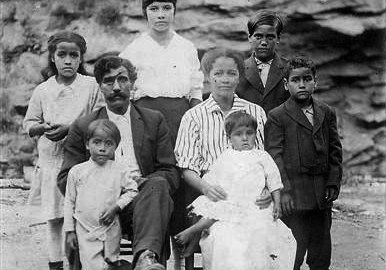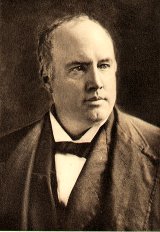Why Were The Melungeons Surprised By Their African Roots?

Yesterday, as we finished recapping our respective workdays over a glass of wine, S. asked me if I’d seen the story on the web about the Melungeon people who had taken a DNA test to trace their forebears. “I have no idea who told these people that they were part Portuguese. Years ago,” I continued, “wandering the stacks of the library at Emory as an undergraduate, I’d stumbled across a section of books, monographs and studies dedicated to ethnic phenotypes. It was the first time I’d ever heard of the Melungeons. And at that time, and in every instance since, whether it was Ebony Magazine or something on the internet, every account I’d ever read, whether it was an expert opinion or anecdotal reminiscence, had stated without equivocation that the Melungeons were descended from Caucasians, Native Americans, and Africans.”
In other words, they had the same racial background as many of my African American friends do today.
Back in South Carolina, where I grew up, the insular hamlets whose inbred inhabitants were descended from racially mixed backgrounds were known as “brass ankle” communities. My mother would label someone a “brass ankle” as readily as you would say someone is Scottish or Italian. It was one of the many tri-racial isolate groups some sociologists took to classifying as Mestees, a derivative of the Spanish word “mestizo”. The impetus for all of these groups of people to claim an exotic reason for having skin that was not white was to avoid by any means necessary the social stigma and the government mandated legal restraints associated with being black in segregated America.
There are in South Carolina today fully five thousand people—perhaps even ten thousand—who do not fit into the biracial caste system upon which the state’s whole social structure is built. These out-castes insist that they are white, and they claim the privileges and courtesies of white people. Some of them, if pressed, will not deny a strain of Indian, though they take no pride in the fact; and most of them are offended even at that suggestion. The dominant whites, on the other hand, are convinced that there is a trace of Negro blood in them and, on the theory that “one drop of Negro blood makes one a Negro,” are reluctant to accept them and regard their claim to white status with various and mixed emotions, ranging from amusement to horror.
This failure of a sizable group of people to fit into the social system creates many problems. It is, in fact, a threat to the whole structure, undermining the popular faith that the system functions adequately and will continue to function forever.
The Mestizos of South Carolina Brewton Berry
Back when I was a teenager, working at one of my family’s dry cleaning stores in Orangeburg, South Carolina, I used to wait on an older customer who was tall and slim, with a distinctive ruddy, dark reddish skintone, a nose like a hawk’s beak and a shock of almost straight coarse black hair he kept neatly trimmed. It was his stiff demeanor and lack of social grace, though, that prompted me to ask my father who he was. It turned out that the man was employed by the same government agency where my father used to work before going into business, so he knew quite a lot about the man., including the fact that he lived off away from town, among his own people, who were supposed to be descendants of an old Indian tribe.
“He looks black to me,” I said, surmising from my experiences growing up in the racially obsessed South that his vaguely European influenced features didn’t look Indian enough to escape being classified as an African American. My father replied instantly, “Just don’t tell him that.”
Melungeons would not send their children to black schools and they were not allowed in the white schools, so the Tennessee Department of Education had “Indian” schools for them. This led to almost total illiteracy among Melungeons. They would not have black teachers and white teachers would not teach in their schools, so they had to depend on the few Melungeons who had learned to read at the Presbyterian Mission School in Vardy. None of their teachers had been to high school. In Tennessee until the 1950’s and 60’s, Melungeons were usually classified as black for marriage, white for voting and Indian for education.
The Melungeons – A Mixed Race People French Creole.com
So should the Melungeons be embarrassed or ashamed of the discovery, through DNA testing, that some of their forbears were in fact African men? I don’ think so. I do think that they would have been better off as a group educationally and financially if they could have publicly accepted the idea of having African heritage from the beginning, but I can certainly understand, given the horrors slavery, Redemption, Jim Crow, and “separate but equal” produced for black Americans, the fanatical compunction of the Melungeons to simply proclaim that they were something else.
Even though interracial marriage is at an all-time high, and the number of mixed race children and adults in our society has risen to the point where they are no longer statistical anomalies, there is still quite a bit of stigma associated with being black in America.
Just ask the current president of the United States if you don’t believe me.





